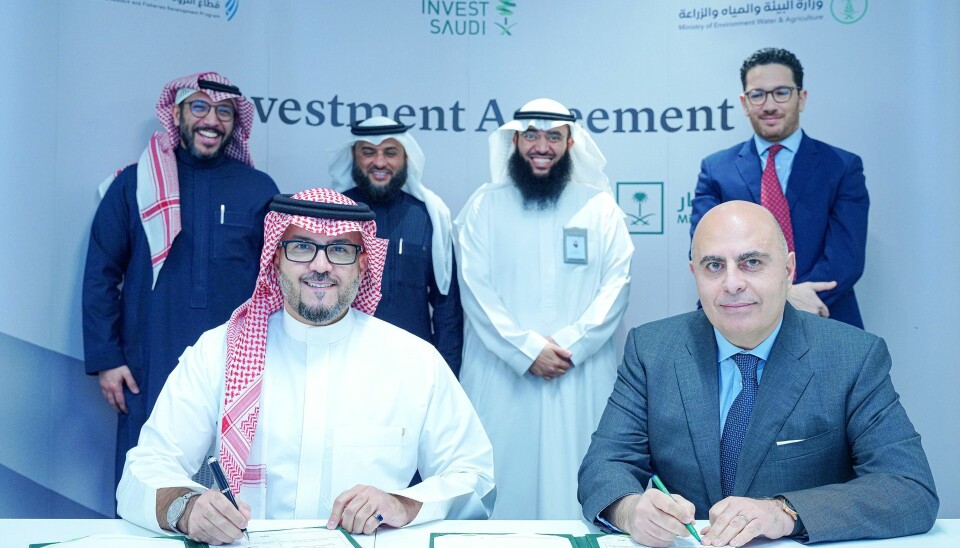
Pure Salmon signs £421m Saudi deal
Kingdom plans one of world’s largest RAS projects
Land-based fish farm developer Pure Salmon has signed a deal with Saudi Arabia to establish one of the largest salmon farming projects in the world.
The project involves an investment of 1.9 billion Saudi riyals (£421.5 million), the country’s Ministry of Investment said.
“This exciting project is not only poised to meet the needs of the local market but also has the potential to be a significant exporter, taking advantage of the Kingdom’s strategic location,” the ministry said in a post on LinkedIn.
Abu Dhabi-based Pure Salmon has been granted operating and investment licences for the Kingdom of Saudi Arabia (KSA), officially marking its start of business in the kingdom.
The project consists of three phases. Pure Salmon will first build a 10,000-tonne per annum facility, to be followed by two additional increases of 10,000 tonne each.
Pure Salmon, owned by Singapore private equity fund 8F Asset Management, has plans for a global network of 10,000- and 20,000-tonne-capacity on-land recirculating aquaculture system (RAS) salmon farms and owns Norway-based RAS technology provider Pure Salmon Kaldnes.
Cutting-edge technology
“Pure Salmon’s vision and values are fully aligned with the Saudi government’s Vision 2030 (Saudi Vision 2030) which focuses on food security, the diversification of the economy and the development of disruptive sustainable industries within the Kingdom,” company chairman and founder Stephane Farouze said in a statement on LinkedIn.
“KSA (Kingdom of Saudi Arabia) plans to expand the local aquaculture industry to reach 600,000 tonnes per year by 2030 and we are proud to contribute to the realisation of this vision. Pure Salmon Kaldnes will bring its cutting-edge RAS technology to the Kingdom of Saudi Arabia. This investment will create hundreds of direct and indirect skilled jobs and, through Pure Salmon Academy and in partnership with local educational institutions in the KSA, will groom and train next-generation aquaculture specialists.”
260,000 tonnes
In 2018, Pure Salmon announced its ambition to produce 260,000 tonnes of salmon annually at a series of RAS facilities to be built close to large centres of population. Japan was intended to be the first country to get a Pure Salmon facility, with others planned for the US and Europe. However, delays attributed to Covid and a determination to ensure the design of the first facility was perfect meant that the only salmon the company has produced so far were from an existing Polish facility that Pure Salmon shared with Israeli RAS expert AquaMaof.
Pure Salmon initially named AquaMaof as technology provider for its future facilities but that deal ended when Pure Salmon bought the Krüger Kaldnes RAS division from international water and waste giant Veolia and changed its name to Pure Salmon Kaldnes.
Progress in US
Groundworks have been taking place at the site of Pure Salmon’s first farm, a 10,000-tonne-capacity facility in Tazewell County, Virginia, in the United States. Construction is slated to begin in early 2023 and conclude by the end of 2024.
The company has previously said that it expected to start work on salmon RAS in Japan and Brunei this year.
Pure Salmon also plans salmon RAS in France and Abu Dhabi in the United Arab Emirates, five 20,000-tonne facilities in China, and a 20,000-tonne RAS in the land-locked southern African state of Lesotho.
Water tables
The France salmon RAS was originally planned for Boulogne-sur-Mer, which is the first port of call for most of the Scottish salmon destined for distribution in Europe, but Pure Salmon has changed the location to Verdon-sur-Mer, at the northern tip of the Médoc, a well-known wine producing region on the left bank of the Gironde estuary, north of Bordeaux.
Water for the facility will be extracted from subterranean sources. News website Franceinfo reported last month that the local water commission, composed of elected officials and technicians, concluded in July 2022 that the pumping forecasts, as presented by the project leader, were incompatible with the state of the water tables.
The results of new test drilling, carried out by the project leader, are awaited.























































